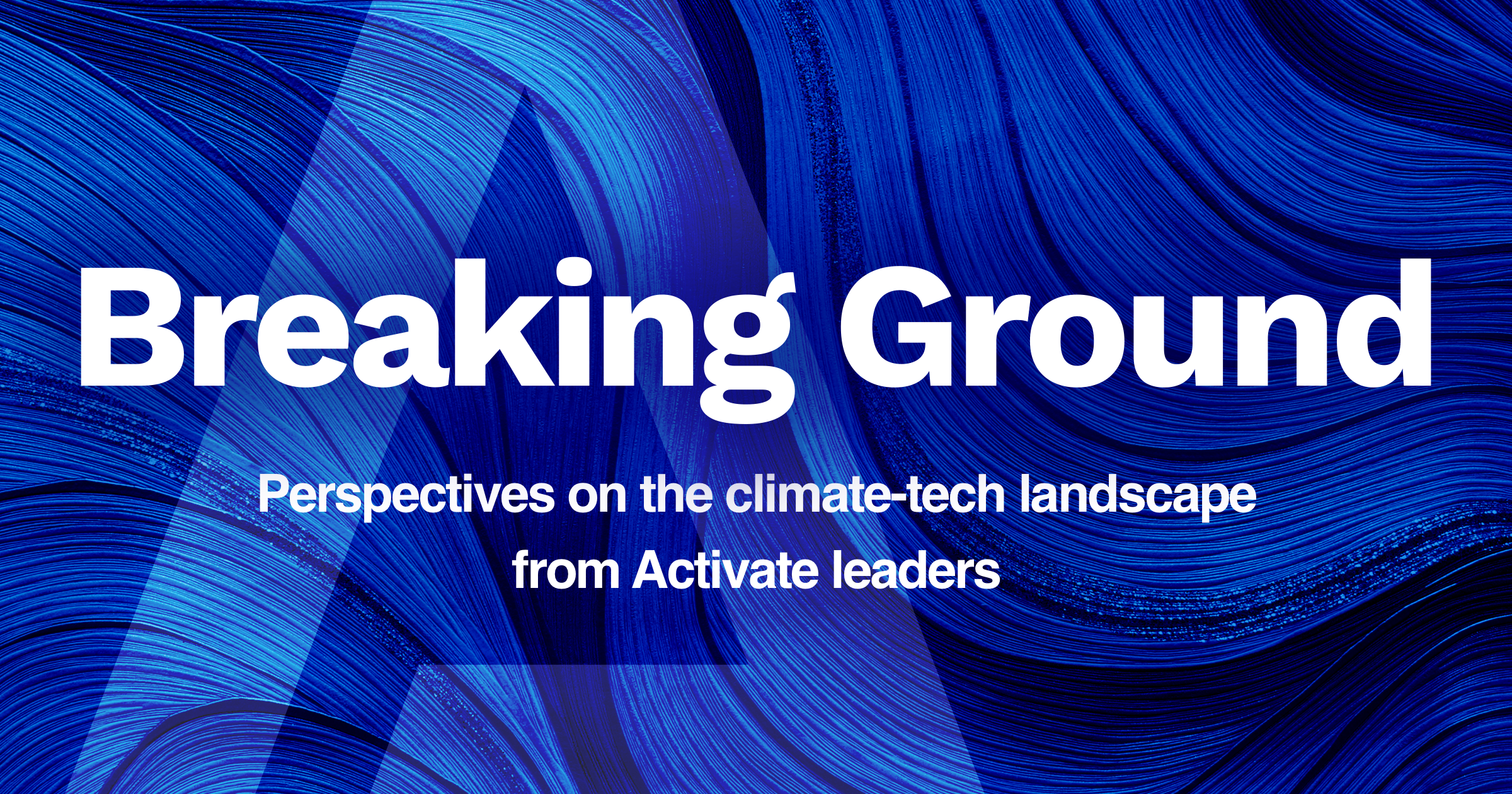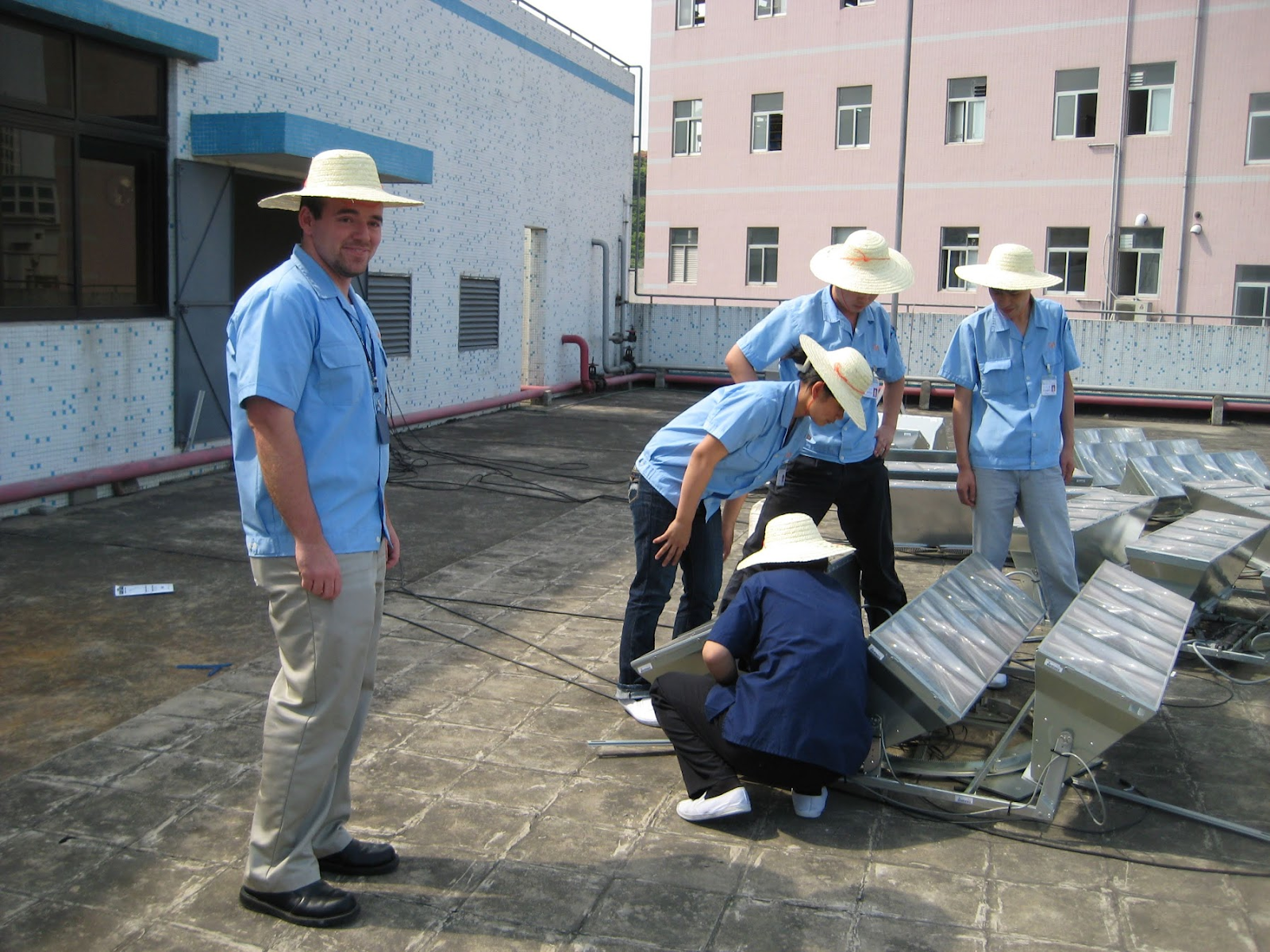From Bright Ideas to Hard Lessons: Insights from My Cleantech Startup Journey
May 28, 2024
By Jeremy Pitts, Managing Director of the Activate Houston Community

In the early 2000s, I worked as a mechanical engineer developing solar trackers and concentrators for a startup. Our goal? To build a commercially viable rooftop tracking solar concentrator. Our thesis was that we could reduce the amount of expensive solar cells needed by building metal and plastic systems to track and concentrate the sun while further getting efficiencies by making the structures we were building easy to install. We had a team of tremendously smart and talented people who devised some clever and innovative designs. In our eyes, we were poised for success.
After all, back in those days, solar panels were selling for $4-5/W and fully installed costs were nearly double that. We had a solution! The sun was shining upon us!
The only problem was that all that shine made us go a little blind. We didn’t realize we were about to stumble into some hard lessons—all of which I’m about to share–with the most impactful lesson saved for last.
Lesson 3: Don’t run before you walk. Do your homework first.

Pictured here is a much younger me on the roof of my old startup’s contract manufacturer's factory in Shenzhen, China. This was in June of 2007. As you can see, I’m with a team from the factory looking at one of our prototypes being tested. It was blazing hot in the Asian tropics and they felt sorry for me, so they gave me one of their hats to help with the sun–only it was too small for my big head, so I really had to force it on. You can’t tell from the picture, but there was a tremendous amount of sweat pouring off my body while everyone else in the photo was dry. Good times. Bonus lesson from this: Always bring your own hat.
Photo Credit: Jeremy Pitts
The name of the game for us was price–specifically competing against traditional solar panels. Given that, we immediately went to China for our manufacturing, essentially skipping the step of building and testing prototype quantities closer to home. We were confident in our designs and knew we needed to lower our prices, so we jumped straight to small production runs of several hundred units. We did build and test prototypes, but did so in parallel with the manufacturing ramp-up, proving out things like tooling while making sure our designs worked. Given that, we had to test our systems on the factory's roof and spent countless hours putting engineers on planes back and forth to China to work out the issues.
The result? Bye-bye, money! So long, time.
A word of warning: Before attempting to scale production, you should make sure that your designs work and your product is feasible, both technically and economically. I dive into this more in the lesson below.

Here’s a close-up of the prototype we’d created at my solar startup. Credit: Jeremy Pitts
Lesson 2: Be ready to pivot. Flexibility is key.
When we set out to launch our first product, we identified a price target we needed to beat and we went heads down to design a product to our desired specifications, including the price point. We’re talking about hard tech though, so you can’t just throw a bunch of developers in a room with some pizzas and have a minimum viable product by the end of the weekend. Between designing, prototyping, and testing, we were able to turn a design around that was ready to begin manufacturing in about a year.
Unfortunately, the price point of solar panels during that time dropped significantly, and our design was no longer competitive.
Not to be dissuaded, we set even more aggressive specifications, went heads down again, and came up with a new, much-improved design… only to discover that we were once again too expensive, as this was the era of the Chinese solar manufacturers coming online and dramatically driving costs down.
So, again, our design was basically dead on arrival and uneconomical from the onset.
We learned this the hard way. I’m sharing this with you now so you’re ready to face this from the start.
In today’s climate tech world, we continue to live in a very dynamic environment with external conditions (competition, regulation, etc.) changing quickly. Developing hard tech takes time, so it’s that much more important to keep your head up and keep an eye on where the market is going. Be ready to pivot quickly if your original design becomes untenable.

Data showing solar (photovoltaic) panel prices expressed in U.S. dollars per Watt. Source: Our World in Data
Lesson 1: Don’t ever forget that you’re in a race. Mindset is everything.
Finally, the most valuable lesson from my first exposure to the cleantech world is the harshest but so true—and it’s a lesson in mindset.
Never get comfortable.
If you want to succeed in clean tech, you must always push forward as fast as possible. Understand on a fundamental level that your company is not special. After all, the reality is that your ideas may be fantastic and ahead of the curve at the moment they’re conceived–but you’re not the only company out there working to create new, improved cleantech solutions. Sure, you can catch up to the incumbent “dirty tech” that has been the same for years because when your competition is a very mature technology, the cost of the competition doesn't change that much over time. However, you can’t afford to forget that you’re competing with many other clean technologies both currently on the market and being developed, some of which already have a head start on you.
I often think about this point when looking at other new climate technologies. Batteries are a great example. Many people are working on a lot of different battery chemistries and concepts. But at the end of the day, lithium-ion remains the gold standard, with costs and performance continuing to make tremendous progress. If you have a new battery technology with a line of sight to beat current lithium-ion prices, that might not be good enough. You need to be instead thinking about where lithium-ion prices are going in the future and make sure you can compete with that future state.

When developing new climate technologies and products, it’s common to use the incumbent “dirty” technology as a point of comparison. These incumbents have generally been around for a while and reached the flat portion of their s-curve, leaving them open to new technology overtaking them. However, in the current environment with many competitors developing new climate technologies, your fiercest competition may likely be another new technology that happens to be on the steep portion of the s-curve with a head start on you. The difference between success and failure is likely how your technology compares to a future start of the existing clean technology, not how you compare today.
Image credit: Jeremy Pitts
Following up on the point I made in Lesson 2, in the case of my solar startup–solar panels started out more expensive and then became less expensive by the time we’d created an alternative. Because our competition was another emerging technology, it was still dropping in price rapidly, so our target was always moving.
Our mistake? The incumbent technologies (the power grid, in this case) were not even a consideration as we were counting on “altruistic” customers paying more for clean power. (Note: Depending on altruism as a business model is also a bad idea, but much has already been written on that topic, so we won’t spend too much time on that here.) Instead, our competition was traditional solar panels, but we only considered the current state of those solar panels, not the future. As discussed above, solar panels were (and to some extent continue to be) on the steep portion of the s-curve, with costs driving down to spectacularly low values, leaving little room for other technologies like ours outside of niche applications.
The bright side of hard lessons
Startups are hard. Climate startups can be even harder, and hard tech startups are harder still. Not every idea is a winner, and not every startup will succeed.
However, a lot can be done to increase your odds of success. My cleantech 1.0 experience happened to be one of the unsuccessful startups–and that’s okay! I learned much and applied these lessons to my next startup with (slightly) improved results.
As managing director at Activate, I enjoy working with my team to compile lessons learned from our staff, other managing directors, and our broader network. Our goal is to help Activate Fellows apply this wisdom to their own startups.
To all the scientists out there who want to go for it and bring their product to market, I can’t emphasize enough how important it is to embrace the mindset that failure is okay. This is particularly true if you learn from the experience and come away better equipped to positively impact the world. I look forward to sharing my lessons with other entrepreneurs and improving their odds of launching successful and highly impactful companies.
That said, if you’re working through your own challenges and any of these lessons resonate with you, applications for the Activate fellowship open on September 4, 2024. With our funding and team's help, you can dramatically increase the odds of bringing your idea to fruition while creating a highly impactful company. And yeah, the journey may be hard, but in my opinion, most things worth doing are.
